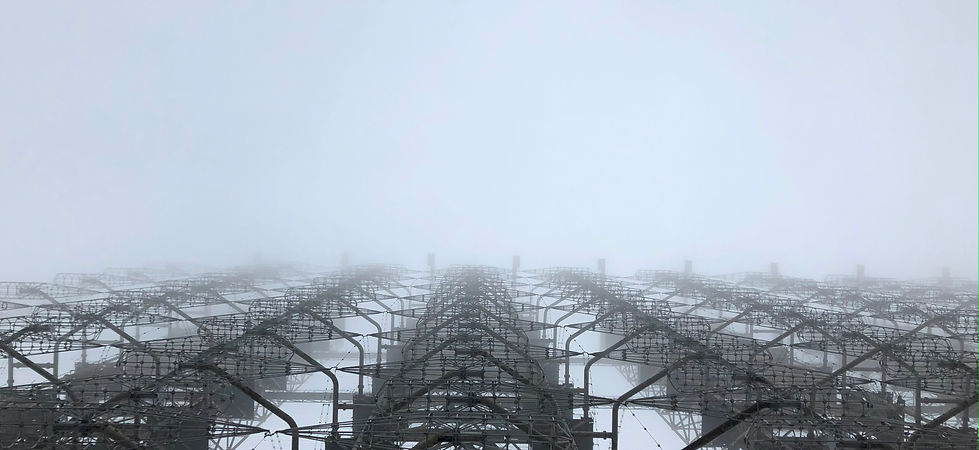
It’s a true story, told the way I live and feel it
Escapism is a photodocumentary project
currently in progress as part of the Relate Art Residency,
supported by the European Union

The project explores both physical and psychological dimensions of escape, examining how individuals respond to adversity.
What does it mean to escape? A fleeting breath, a desperate flight, or a quiet rebellion?
- Act I: The Personal Pulse – Escapism as emotional necessity
-
Act II: The Social Mirror – Escapism as cultural symptom
-
Act III: The Human Face – Escapism as survival
-
Act IV: The Reflective Return – Escapism as healing
In the end, escapism is not an answer—it’s a question. Is it a sanctuary or a trap? A necessity or a privilege?
When does escapism shift from an individual experience to a political consequence?
Are we escaping toward growth, toward healing, toward something better? Or are we evading realities that demand confrontation?
Being-in-itself
Installation. Larnaca Art Biennale. Cyprus
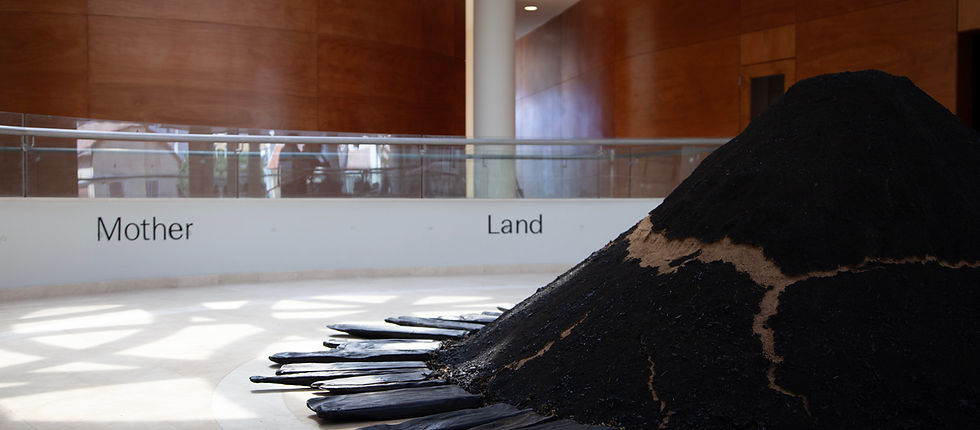
Being-in-itself. A pile of black fertile soil, or "Chornozem", as it's called in my native Ukraine, is a powerful symbol - of my country, my roots, and what my life used to be. the writings around it say “Source”, “Soil”, “Dust”, “Mud”, “Earth”, “Property”, “Home”, and “Land”. They convey all the different ways a person can perceive this soil, based on their personal experience. The idea appeals to Immanuel Kant's "thing-in-itself" - an object as it is, independent of representation and observation. However, our perception of the object is not independent, it is determined by feelings, beliefs, knowledge and experiences of each individual. The one and only thing that gives me the immediate sensation of being Home, regardless of which country I am in, is the smell of wet soil after the rain. And while I cannot recreate the "Chornozem" installation in its entirety due to the EU restrictions on soil and agricultural produce import - I still have just a handful of rick black Ukraininan soil with me. It is an old tradition to bring a handful of soil as a keepsake, to carry the Motherland on a long journey. If the journey ends in the foreign land and the traveler has to be buried there, the soil of his homeland is thrown in his grave - "earth to earth, dust to dust". The concept of soil, of earth and Earth is bigger then a dot on the map that indicates my location. I am carrying my earth with me, the Earth carries me. We co-exist.
Human without skin
Embroidery on a bodysuit. Limassol carnival. Cyprus

Embroidery on a bodysuit. 2023
Human Without Skin is a visceral textile work that maps the anatomy of the human circulatory system through intricate embroidery on a costume-like form. Veins and nerves are rendered in thread, exposed and unprotected, tracing the body's inner architecture as if the skin has been peeled away. The result is a figure laid bare—raw, vulnerable, and painfully honest.This piece is not just anatomical; it is emotional. It reflects the dissonance of living in a safe, peaceful place while my homeland is torn by war. Among carefree faces and casual conversations, I feel like a body without skin—every nerve exposed, every emotion amplified. I am not okay. And I refuse to pretend otherwise.Human Without Skin is a quiet protest against the pressure to perform normality. It does not seek to disrupt your peace, but it also will not hide its pain to preserve it. It asks: how do we coexist when our realities are so different? How do we remain human when our empathy is numbed by distance?This work is a reminder that beneath every surface lies a story—sometimes bleeding, sometimes trembling, always alive.
White Spots
Oil paintings. Jan Garemijnzaal, Brugge, Belgium
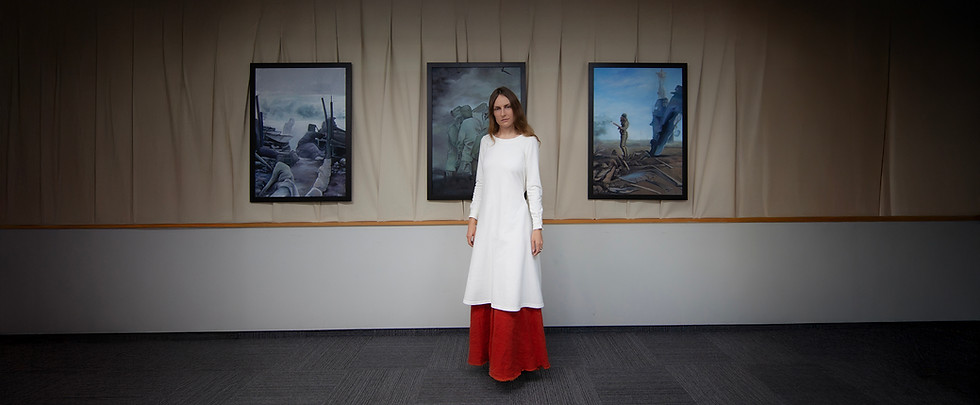
Series of oil paintings. 100x80 each, 2022
White Spots exhibition is a deeply personal attempt to gather myself—and perhaps others—in the wake of our shared tragedy during the early months of the full-scale invasion. It was never my intention to exhibit these works. They began as private reflections, painted in solitude. But somehow, they found their way into the light.
The paintings capture fleeting moments from the lives of Ukrainians—scenes that have become part of our new, harrowing everyday reality. Yet these moments rarely make it into headlines. They are the “white spots” in our collective memory, the silences in the noise. And I believe each of us carries stories like these, waiting to be told, endlessly unfolding. Among the works are two square canvases—self-portraits. One is titled Refugee. It’s vibrant, chaotic. The background is inspired by Natalya Serhiyevna, a homeless woman who lived in my Kyiv block. She was lucid in conversation, except for her belief that she was a theater and film actress from Buenos Aires. Her clothes and bags were adorned with handmade flowers and bows crafted from colorful plastic. When I arrived in Cyprus, displaced and burdened with bags, I saw myself in her—this eccentric woman telling everyone she’s an artist. And I realized: I am her. The second self-portrait is darker. It embodies the raw, corrosive hatred I felt toward the enemy—a feeling so intense it threatened to unravel my own humanity. That canvas asks a question I still wrestle with: How do we remain human in the face of madness? The war is relentless. Every moment, it unfolds in tragedy, heroism, and quiet survival. Stories that only a few witness—and those few are the nation itself. A young man, barely grown, caught in the battle for Gostomel. His mother, hiding in a basement in Bucha, or held captive, or haunted forever by the sound of enemy boots. Survivors nursing invisible wounds. The scale of it all is morally overwhelming. It makes you feel small. But that’s an illusion. You may have felt the tension among Ukrainians—toward those who left, those who seem indifferent, those consumed by their own lives. These are the so-called “wrong” people. But when we move from the abstract to the personal—from categories to faces—we rediscover humanity. Everyone has the right to despair, to rage. What matters is that we stay connected. That we choose compassion. That we become drops forming a mighty ocean. Because our greatest freedom lies in how we respond.
Self-reconstruction with AI
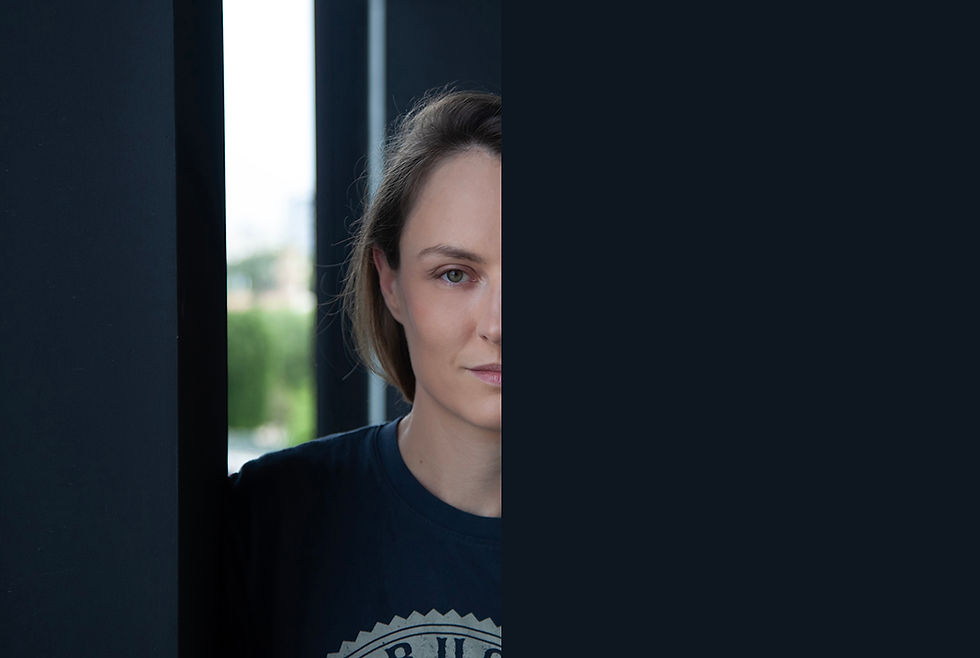
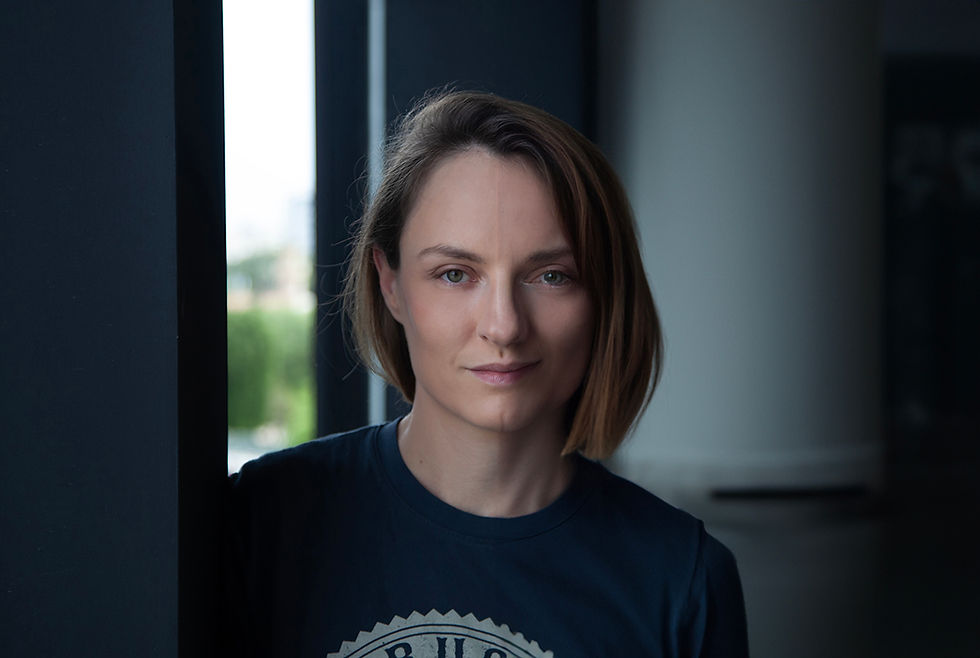
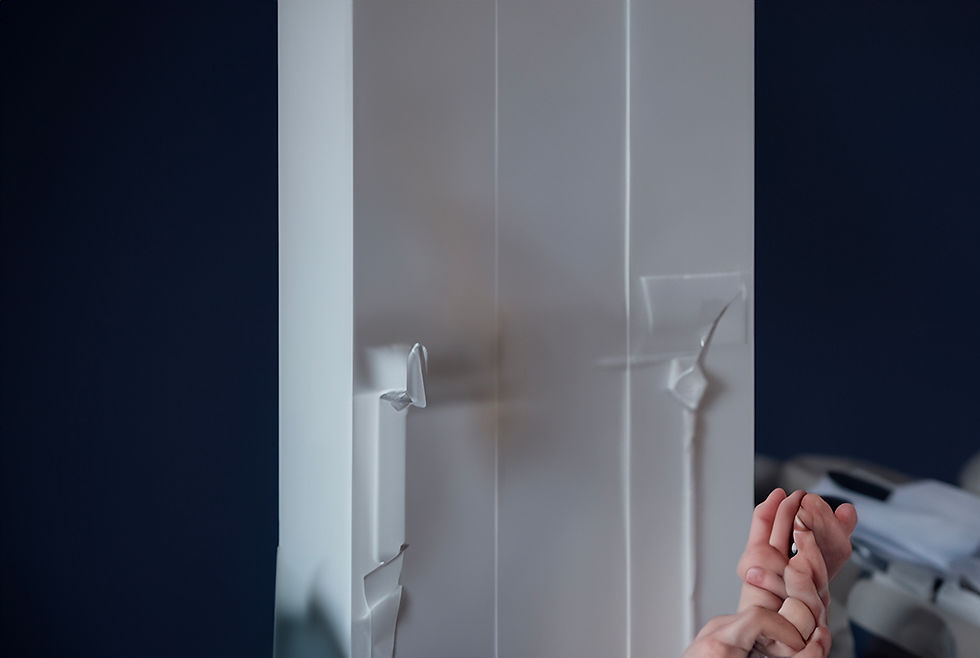

This digital experiment explores the tension between identity and algorithmic interpretation. Beginning with a self-portrait, I initiated a recursive cycle of erasure and regeneration: first removing half of my face and allowing AI to reconstruct it, then switching sides and repeating the process. With each iteration, the portrait became less mine and more machine — a gradual unraveling of human likeness.
By the seventh cycle, all recognizable traces of a face had vanished and a window with the inscription "Generated images violate user guidelines" appeared on the screen. The work questions the boundaries of authorship, the fragility of self-image, and the point at which digital mimicry overtakes human essence.
Crown of Thorns
Art object. Collaboration with Alex Zakletsky

Crown of thorns. The object was created during the Coronavirus lockdown. 2021
Since twisted pair cabling is a type of wiring used for communications and in combination with hypodermic needles it became the most obvious choice as symbolic medium for “Crown of thorns”.
I am reflecting on dramatic chalanges to remain social conected during the global public health crisis and the integral role of digital media as a kind of countdown of new epoch.
Made in Chornobyl
Documentary art project. Kyiv History Museum. Ukraine

Made in Chornobyl.
Project contains photo series, installation, video and paintings which were created during the art residency in Chornobyl Exclusion Zone. 2019
I chose to use the object as mundane and obvious as a large Mason jar filled with water. This 3 liter jar is used as a lens, distorting the picture seen through it. The picture "through the looking glass" looks deformed, uglified - or strangely beautiful. Everyone can find this non-conventional beauty if they step outside the box or socially approved norms. In a certain sense Chernobyl is that Mason jar, a "canned", locked down area that stirs up feelings of pain, fear, bitterness and compassion. Walking around Pripyat town, visiting abandoned villages transports us to the post-apocalyptic scenes, where reality is forever distorted by the tragedy. 33 years after the humans left this place the nature slowly takes over and completely wipes off the remains of the civilization. Wild animal population has grown substantially: moose, lynx, eagle owls, Przhevalsky horses, wolves and many other endemic species. Thick wild forest replaces the arranged raws of the old one. All of this is happening against the humans, and still humans remain the main exhibit in this tragedy. There is a strict rule in the Zone - everything you bring in you have to take out. Workers and locals use reusable containers. This might be the only place in Ukraine where there is no trash piled up on the sides of the road, and the nature is respected and treasured. When we needed water for plain-air, the Chernobyl cafe worker offered to can the water in the large Mason jars. This staple of Soviet era inspired me for the “Exhibits” textile printed series.
Noumenon
Collaboration with Ave Libertatemaveamor
Rymi Art Gallery. Ukraine
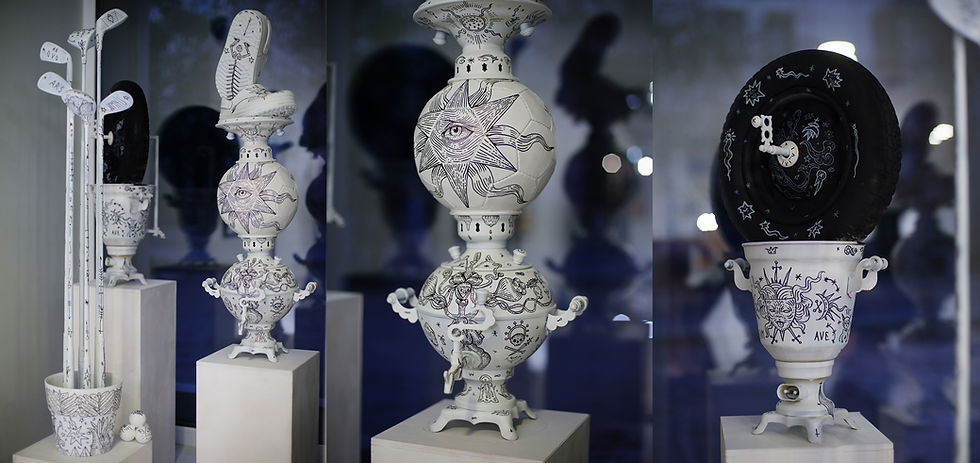
Hand painted tree-dimensional compositions or ready made objects. 2019
Noumenon is a conceptual art installation that interrogates the boundary between perception and reality. Composed of familiar objects stripped of their conventional function and meaning, the work invites viewers to confront the illusion of significance that arises when essence is lost. What remains is not absence, but a haunting presence — a suggestion of something beyond comprehension.
Inspired by Immanuel Kant’s notion of the thing-in-itself — the noumenon — the project reflects on the impossibility of truly knowing the essence of objects beyond our sensory experience. As Kant wrote, “Knowledge refers to phenomena, and things in themselves remain incomprehensible.” This philosophical tension becomes the foundation for a visual meditation on pure reason and its antinomies.
The artists draw further influence from Hermann Hesse’s The Glass Bead Game, engaging in a symbolic “play” that reimagines corporate aesthetics and artistic language. Through monochromatic graphics and ambiguous visual narratives, the installation unfolds without a clear origin or conclusion. Each symbolic image opens a new associative pathway, challenging the viewer to navigate meaning without the anchor of familiarity.
Noumenon is not a search for answers, but a confrontation with the unknowable — a poetic gesture toward what lies beyond the veil of perception.
Katherines
Photo documentary art project. National center "Ukrainian House"

Katherines
Photo series, video-installation, Photo-motion, white screen, projector, faux fur, fan. 2017-2019
Inspired by “Katherina” poem written by T.G. Shevchenko Following the footsteps of established writers and photographers, I chose the way of critical metaphors, rethinking the fate of modern day "Katherines" . I follow them to the real rock bottom, meet "Les Miserables" who exploit the position they are in.I travel to the forgotten "underbelly" of Ukrainian villages and find my "heroines": welfare-less mothers with more children that they can provide for. I saw them as stuck in their destructive "comfort zone", unwilling to change anything about the way they live. On the other hand, limited access to the information and the outside world at large makes such changes almost impossible and the grim scenario is bound to continue.
Foodstuffs portraits
Series of shawls. Modern Art Research Institute of Art Academy of Ukraine

Foodstuffs portraits. Series of shawls. Digital fabric printing 100x76 cm 2019
The array of things that a person puts on a supermarket's moving belt creates an instant portrait of his or her personality. Two loaves of bread, a bottle of Vodka and bottle of baby formula. We know nothing about this customer, however the brain involuntarily makes conclusions based on our imagination edited by experience. Issues of alcohol abuse, child abuse or are we just prejudiced? And then even more scenarios come up in our head. What I'm trying to point out is that art can’t make someone a better person or citizen all by itself. Multidimensional approach should be used - where different institutions such as family, education system, morals and propaganda, environment work together to achieve a holistic influence on a person. Art in this system could be means of reaching moral or educational goals, creating awareness, raising uncomfortable questions. In skillful hands.
Womb
Video-installation. Modern Art Research Institute of Art Academy of Ukraine
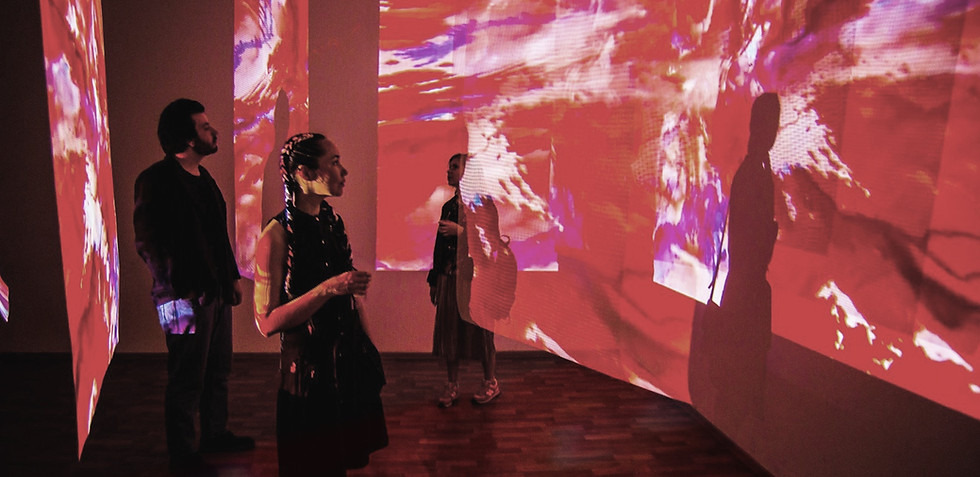
“Womb” — A Sanctuary of Sound, Flesh, and Memory
In my video installation Womb, I invite viewers into the very cradle of human existence: the uterus. This work is not merely visual—it is visceral, auditory, and deeply personal. Created during my pregnancy, the installation features real-time recordings of my unborn son’s heartbeat, layered into an imagined interior of the womb, painted as I envisioned it from within. It offers not only a space to witness, but to inhabit—to feel suspended inside the intimate, unseen beginning of life.
At first glance, Womb seems to be a tribute to motherhood. But upon deeper engagement, it is an unflinching portrait of birth as both miracle and trauma. This duality is core to the artist’s narrative: that childbirth, though celebrated in its symbolism, is endured in silence. Women’s stories of pain, fear, and survival in giving life are buried beneath centuries of cultural expectations and evolutionary consequence.
The installation does not romanticize the experience. Instead, it confronts viewers with the physiological and emotional toll that pregnancy and birth exact on the female body. As humans evolved to walk upright and accommodate increasingly complex brains, the female pelvis narrowed, the infant head expanded, and childbirth became exponentially more dangerous. This evolutionary tradeoff is invisible in our everyday assumptions, yet it shadows every delivery with pain, vulnerability, and potential loss.
At its core, Womb is about isolation. Even in the most supported circumstances, birth is a solitary journey. The physical and mental metamorphosis is borne alone, often in silence. This installation gives form to that solitude, echoing with a heartbeat that once pulsed within me myself, now resonating in the bodies of strangers who step inside my creation. It is an act of radical empathy—and a gentle provocation to remember what women endure, every day, to create life.